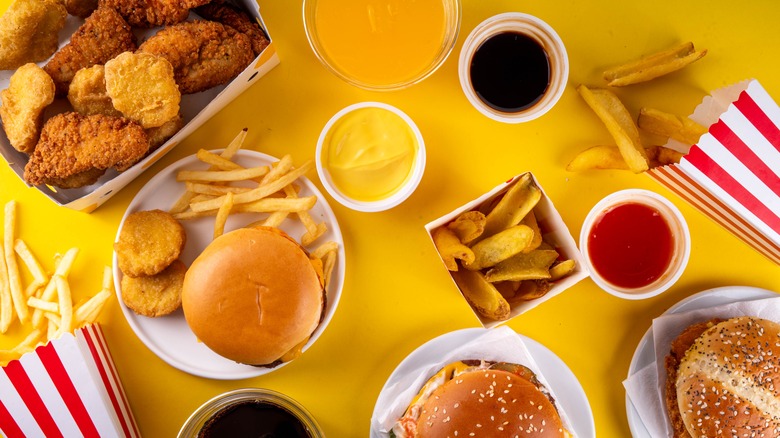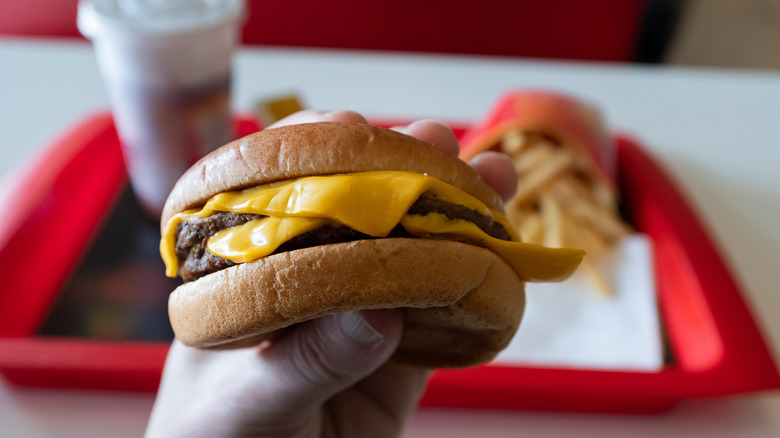How Fast Food Restaurants Actually Turn A Profit
The origins of fast food can be traced all the way back to the Roman Empire, but fast food as we know it launched in the United States just over a century ago and still has a strong foothold today. With options like grabbing whole-egg breakfast sandwiches in the morning, a quick lunch on the road, or a speedy bite before your flight, the appeal of modern chains is undoubtedly the convenience and relatively low prices. So how is it that so many can not only survive, but also thrive while selling food items at a fairly minimal cost to consumers? To find out, Food Republic talked with Matt Taylor, Director of Food Safety Consulting at NSF.
"Profitability in the fast-food industry is complex," Taylor said. "While cheaper ingredients and low labor costs play significant roles, selling high-profit items, such as specialty drinks and desserts, often drives margins. Menu items that require minimal preparation but can be sold at a premium are particularly profitable. For instance, combo meals that bundle a drink with a meal can increase the average transaction value."
So when you find yourself anticipating the release of your favorite chain's next seasonal slushie or limited-time shake, it's safe to say that the restaurant likely is excited about it, too. Between the profits from the specialty beverages themselves, their ease of preparation, plus the likelihood of many consumers tacking other items onto their order, it's a win-win situation.
More profit-making menu items and strategies
Of course, specialty sips aren't the only thing keeping chicken, burrito, and burger behemoths in business. According to Matt Taylor, there are a couple of other menu options that savvy chains can use to turn a profit. "Specific menu items, like fries and soft drinks, are especially profitable," the expert told Food Republic. "These items have low production costs yet are often sold at a significant markup. This pricing strategy influences how meals are portioned and priced overall, allowing fast food chains to maximize profits while keeping the base prices appealing to consumers."
In addition to making money from the meals that consumers are purchasing, fast food restaurants can employ a few other strategies to lower expenses and maximize profit, including some clever techniques that quietly encourage you to spend more, like using self-serve kiosks. Additionally, chains that streamline the menu by using the same ingredients for various offerings can lower the bottom line while also potentially reducing waste. And if you find yourself with nowhere to satisfy your craving for a late-night nosh, profitability may be the reason. For fast food spots with fewer customers overnight, it makes more sense to close up shop than to dole out the dough it costs to keep the lights on and pay workers during low traffic times.


